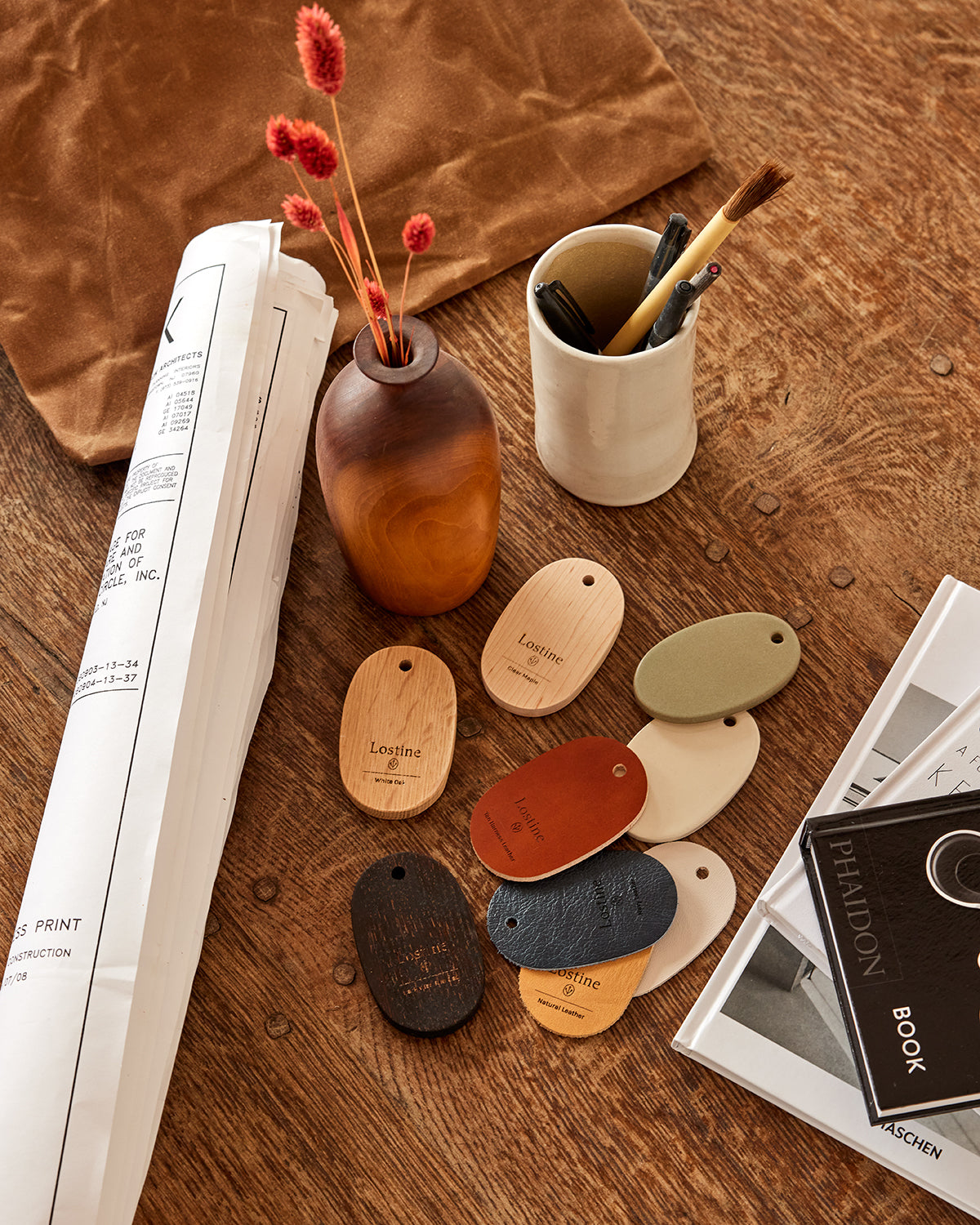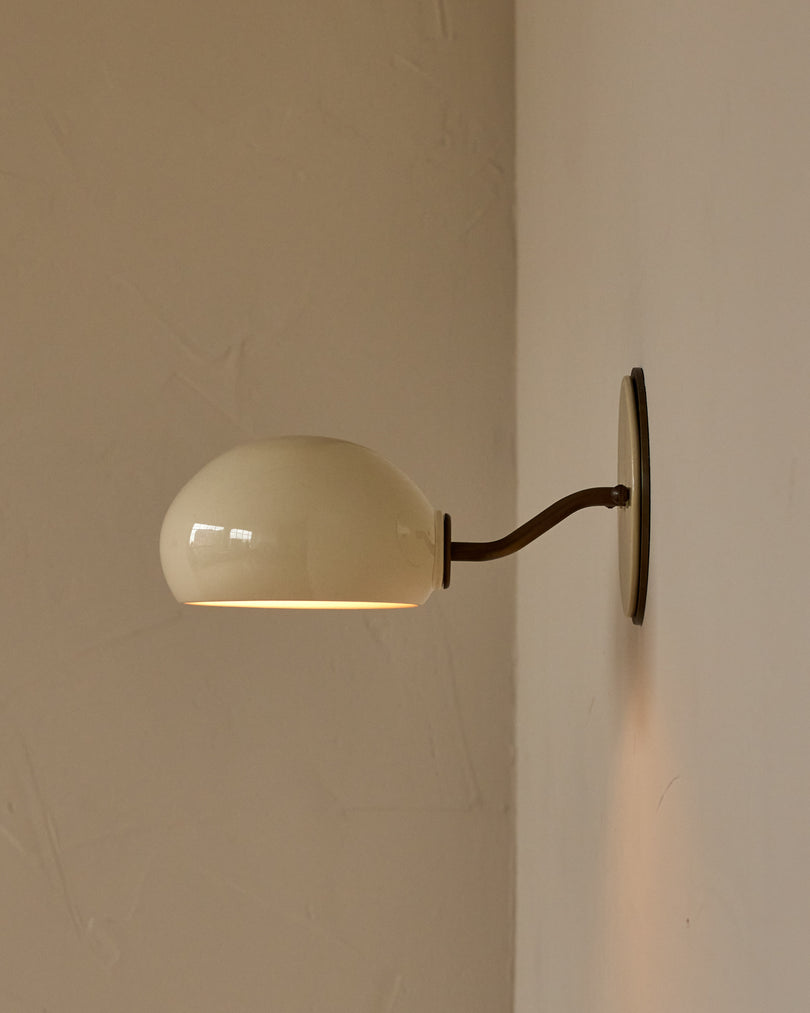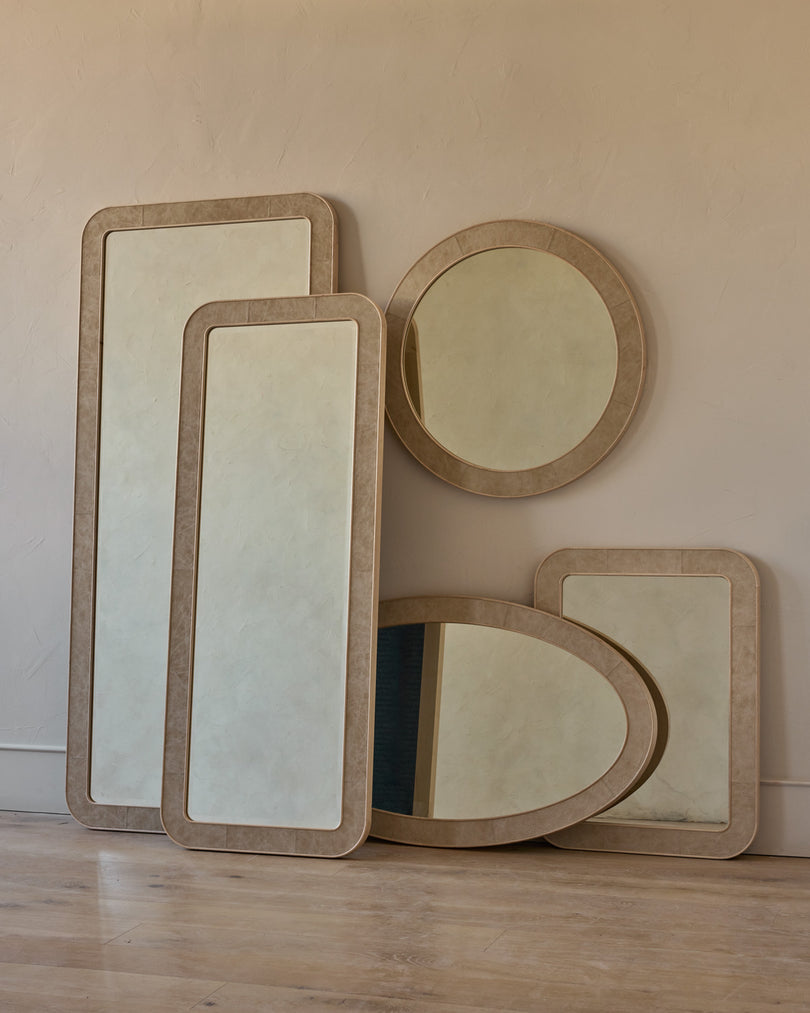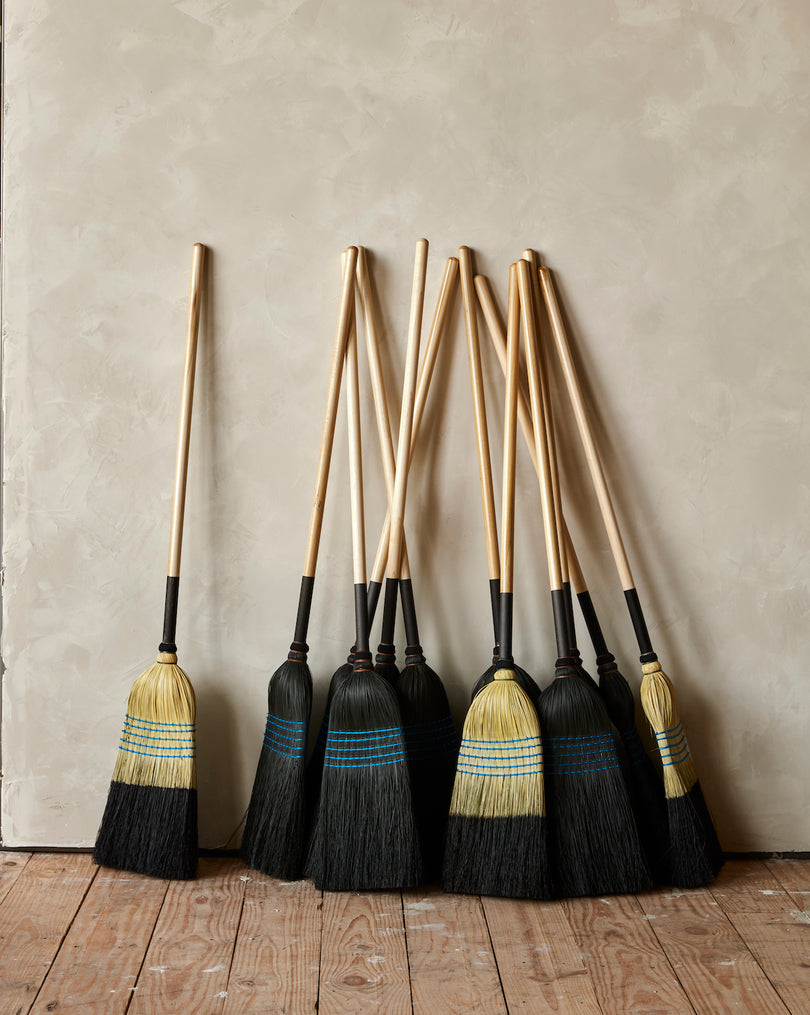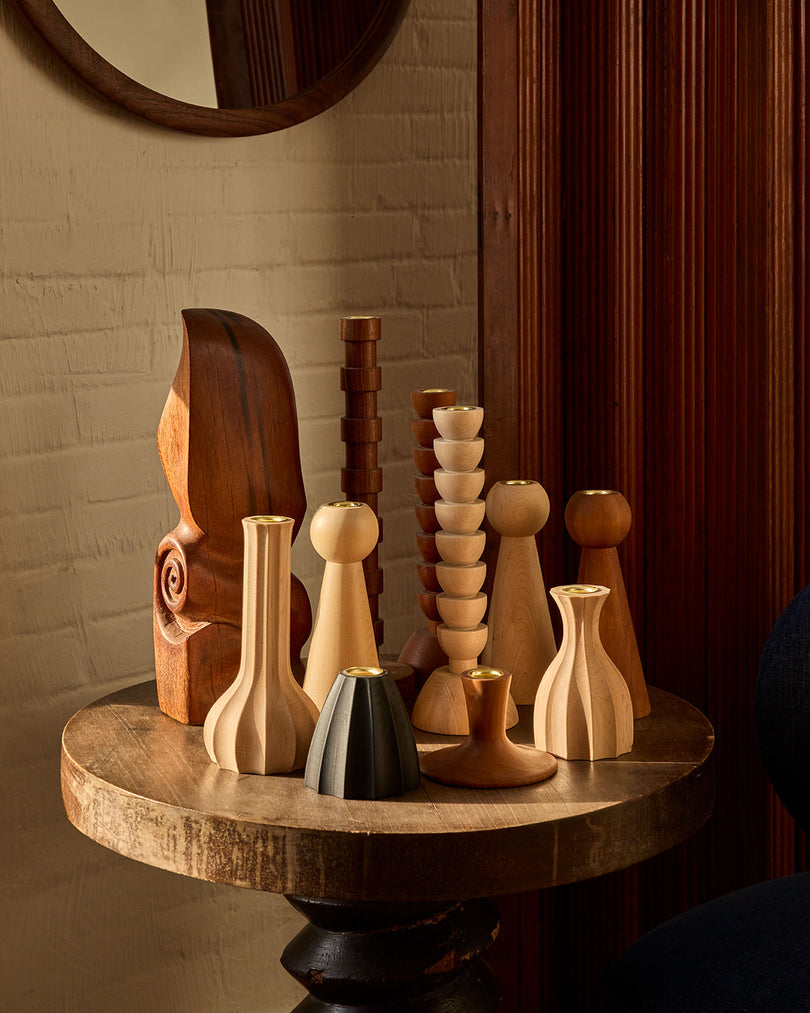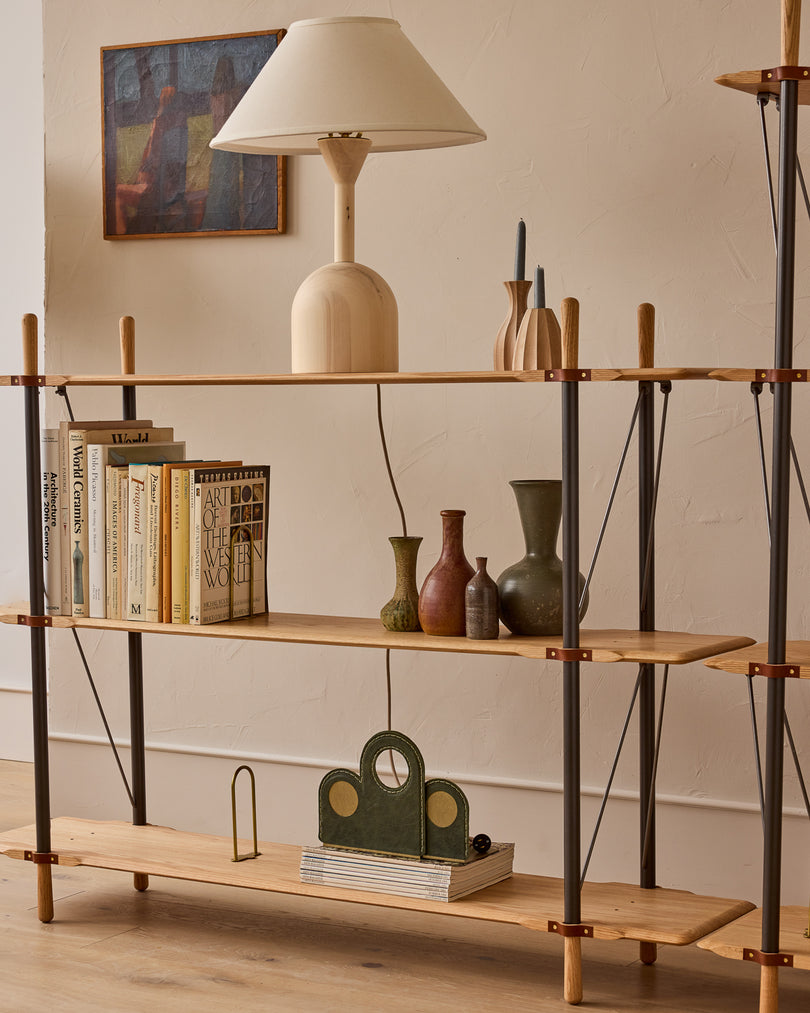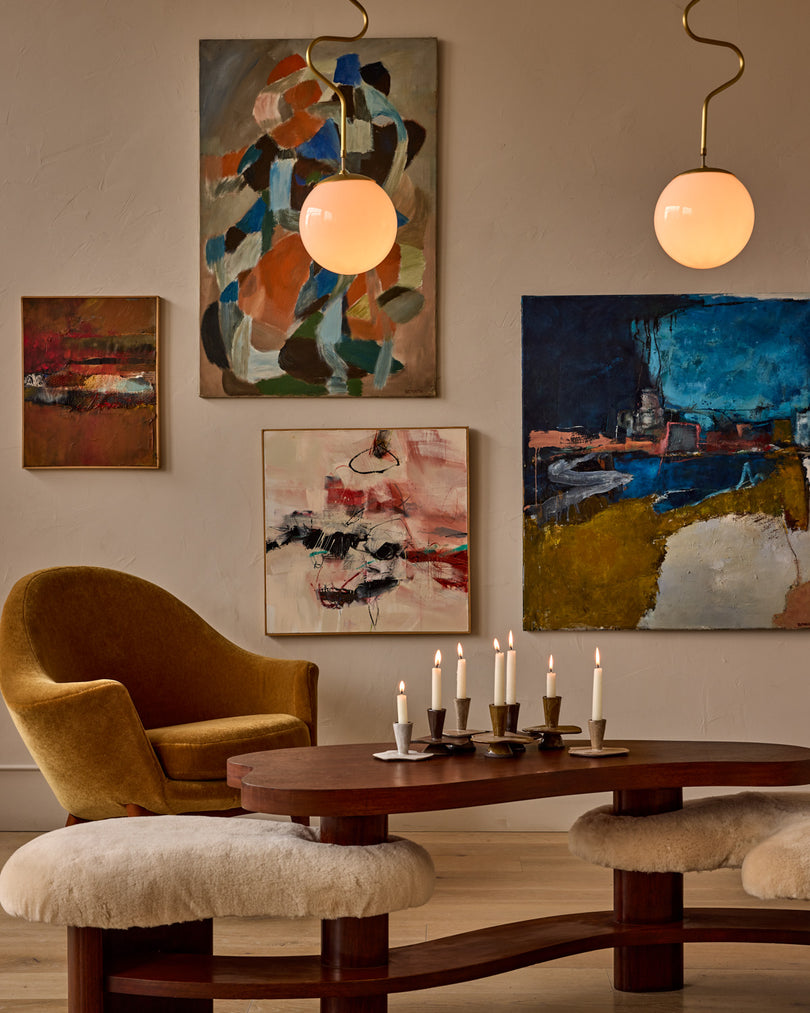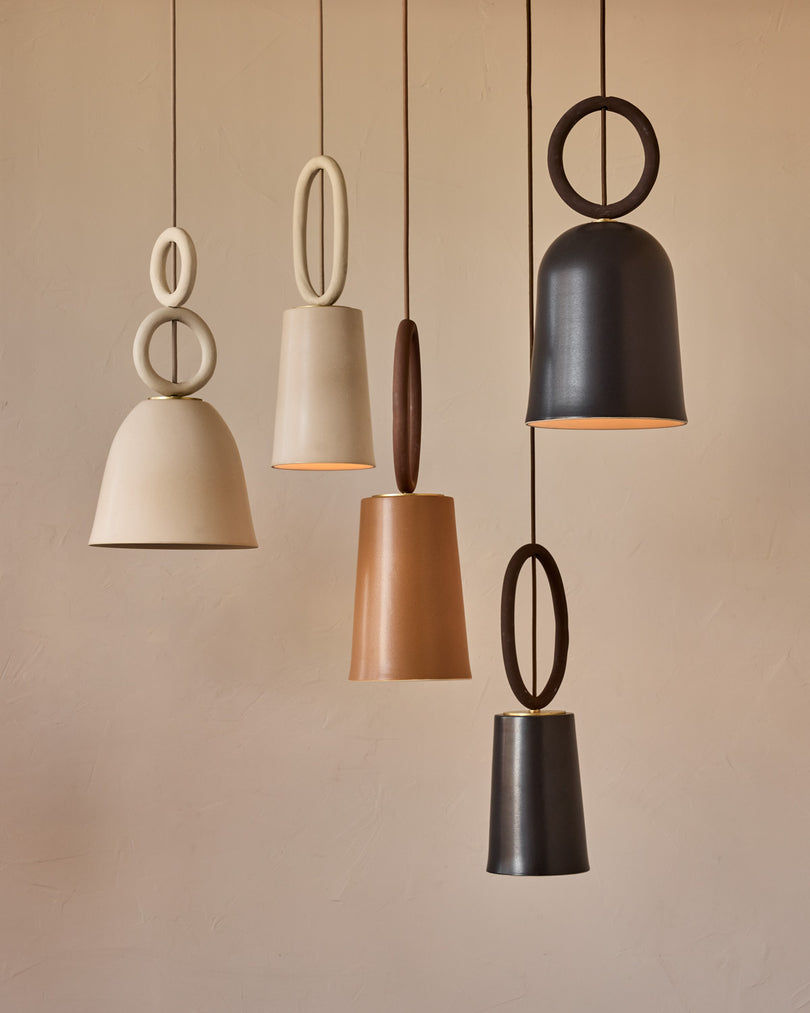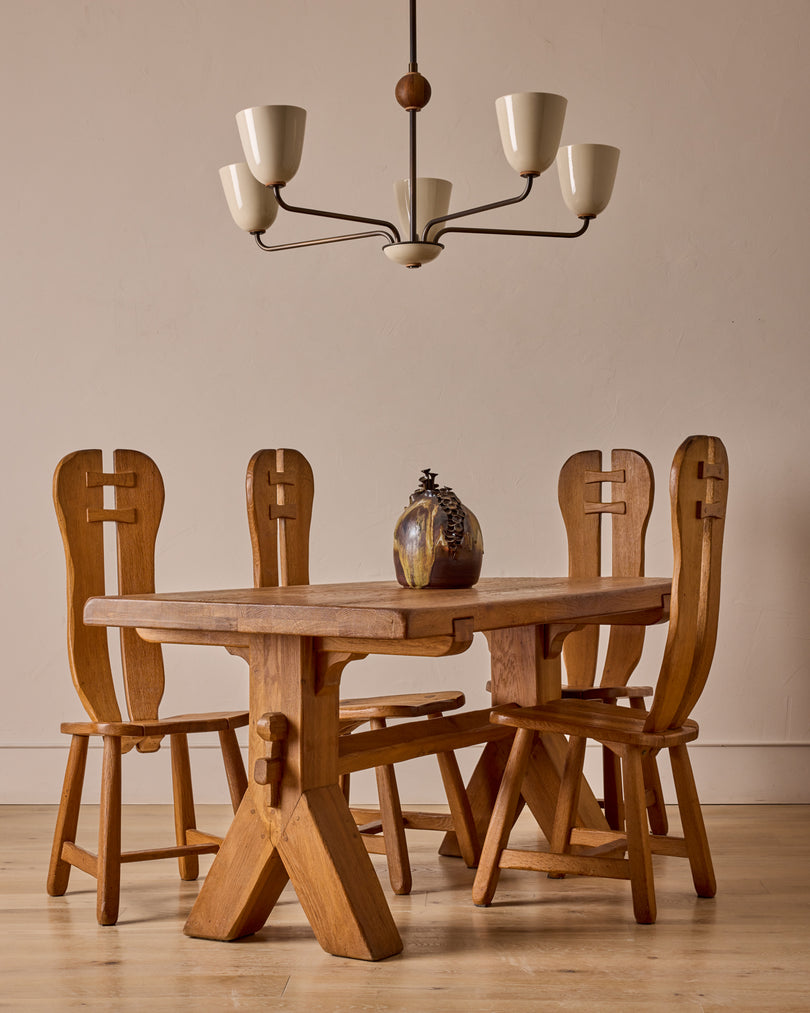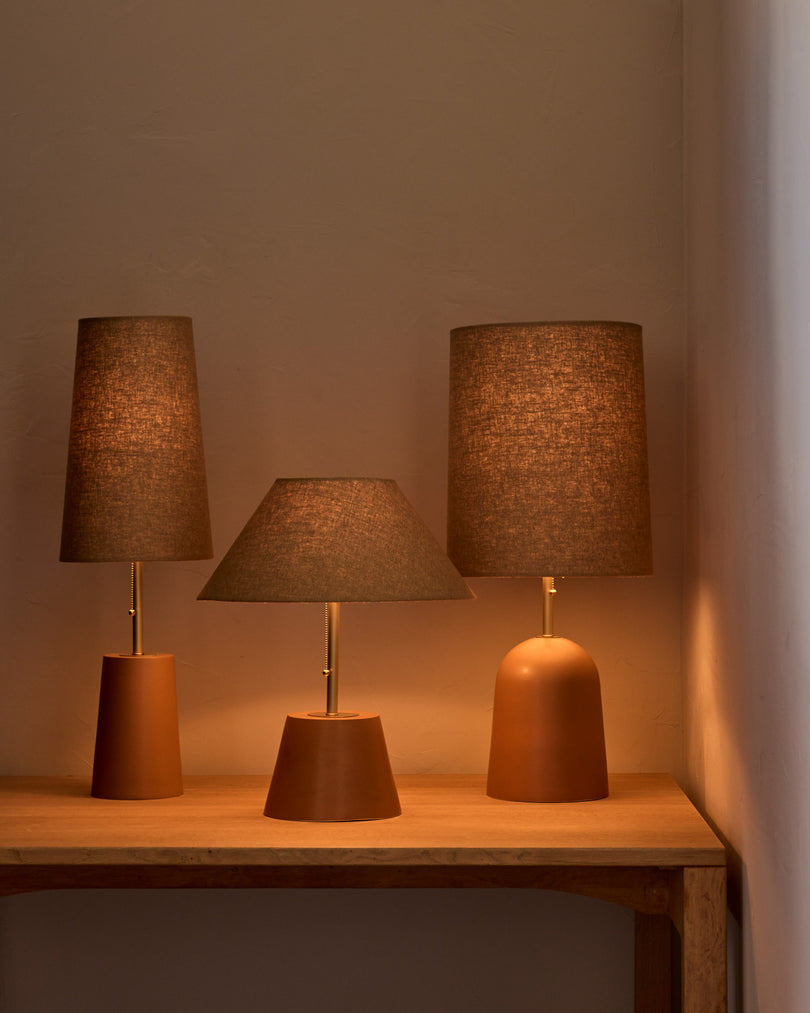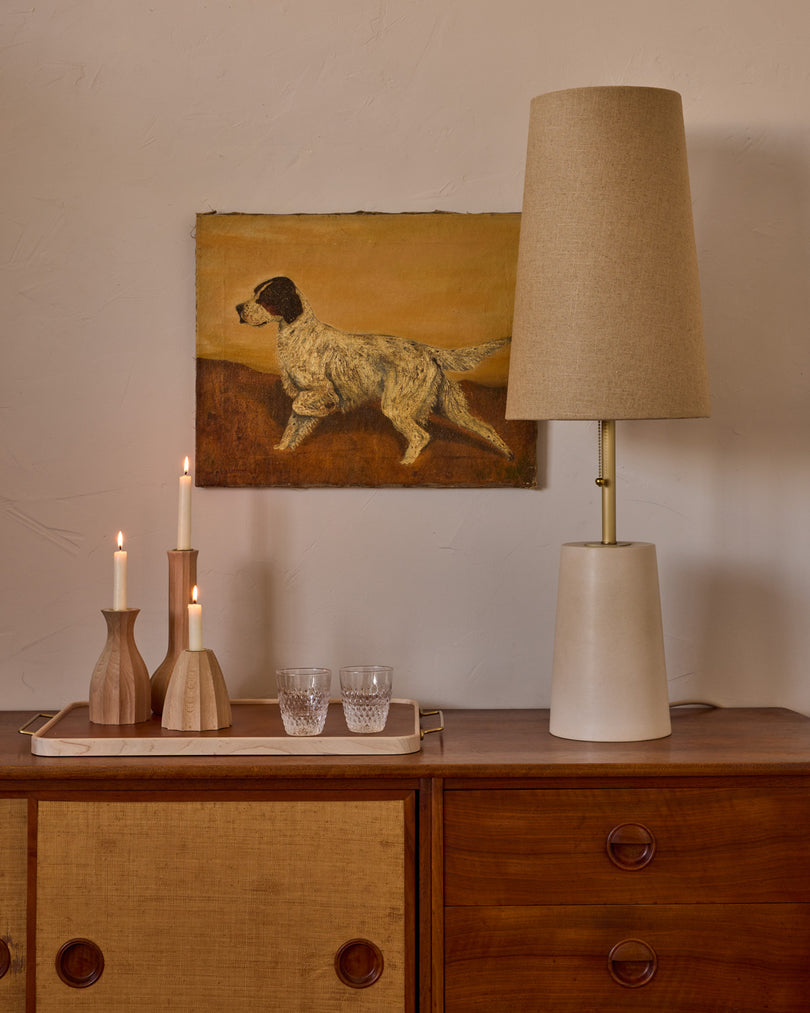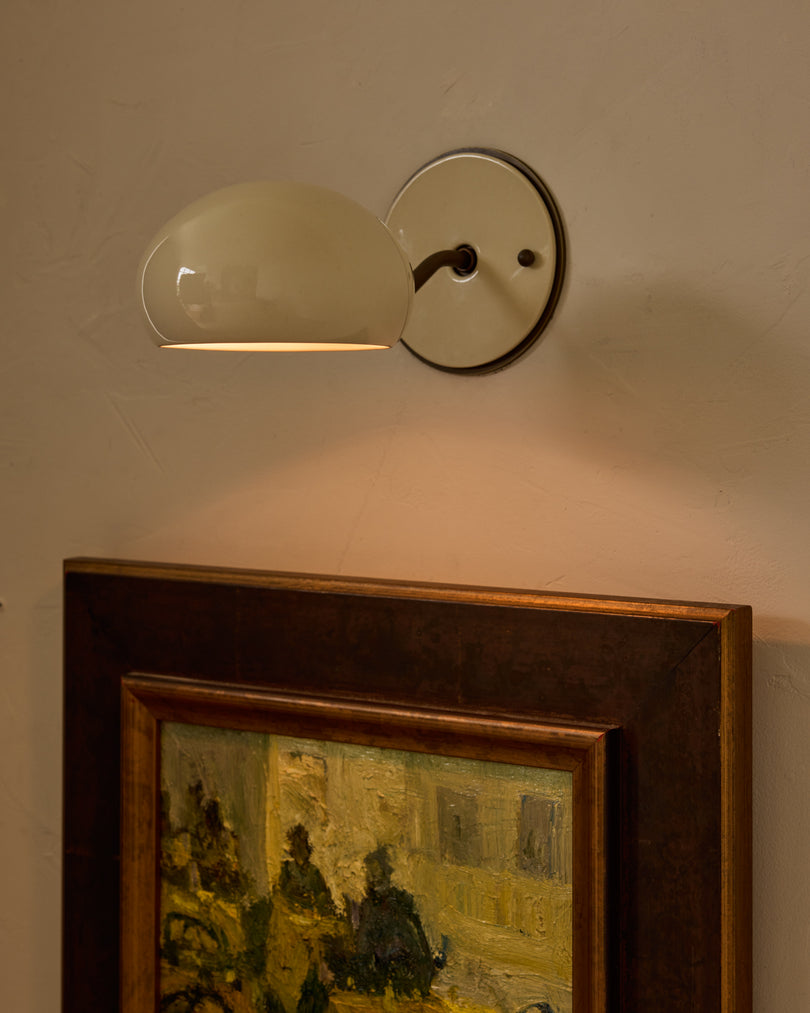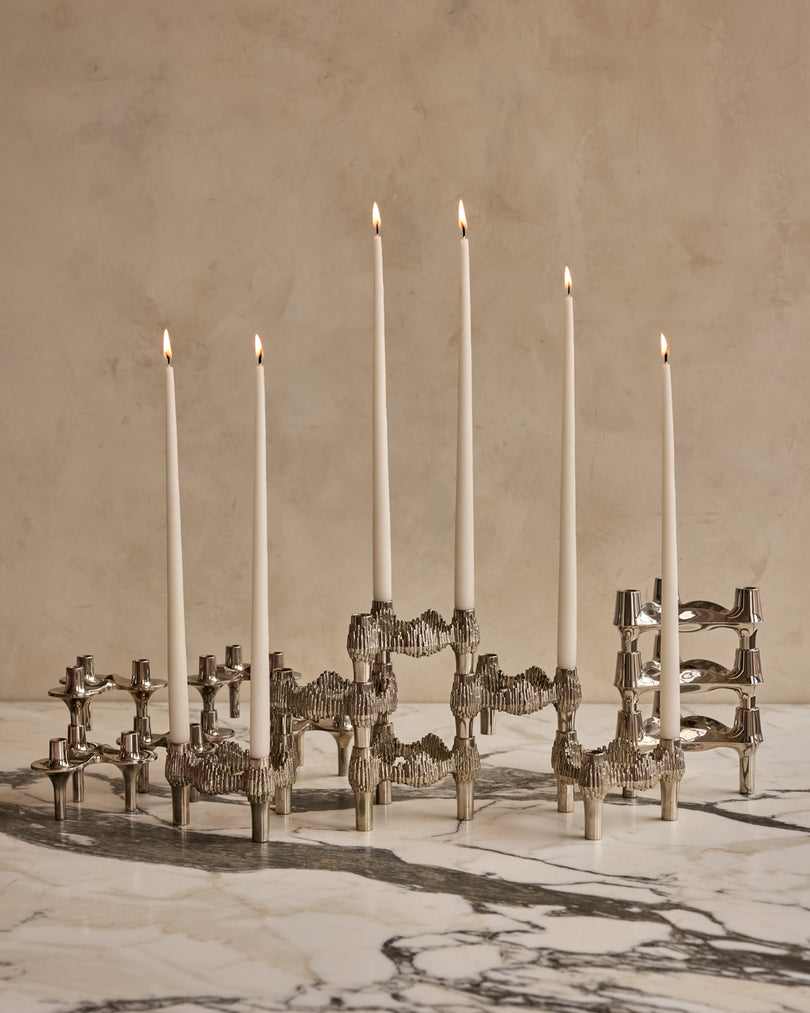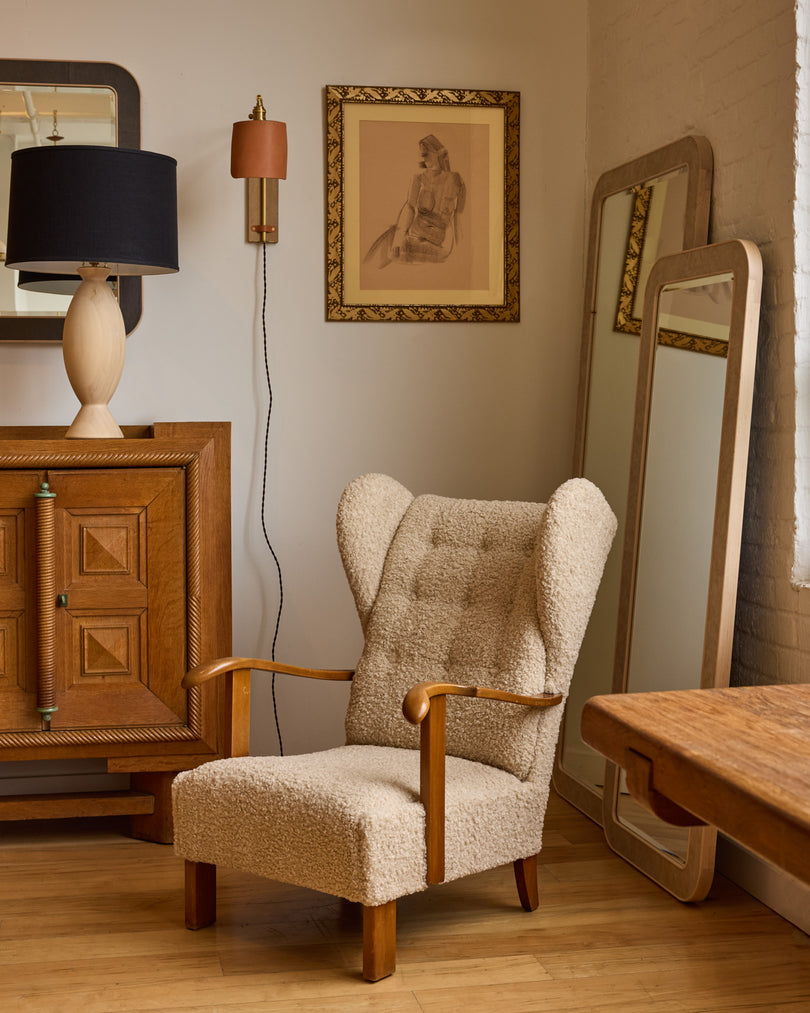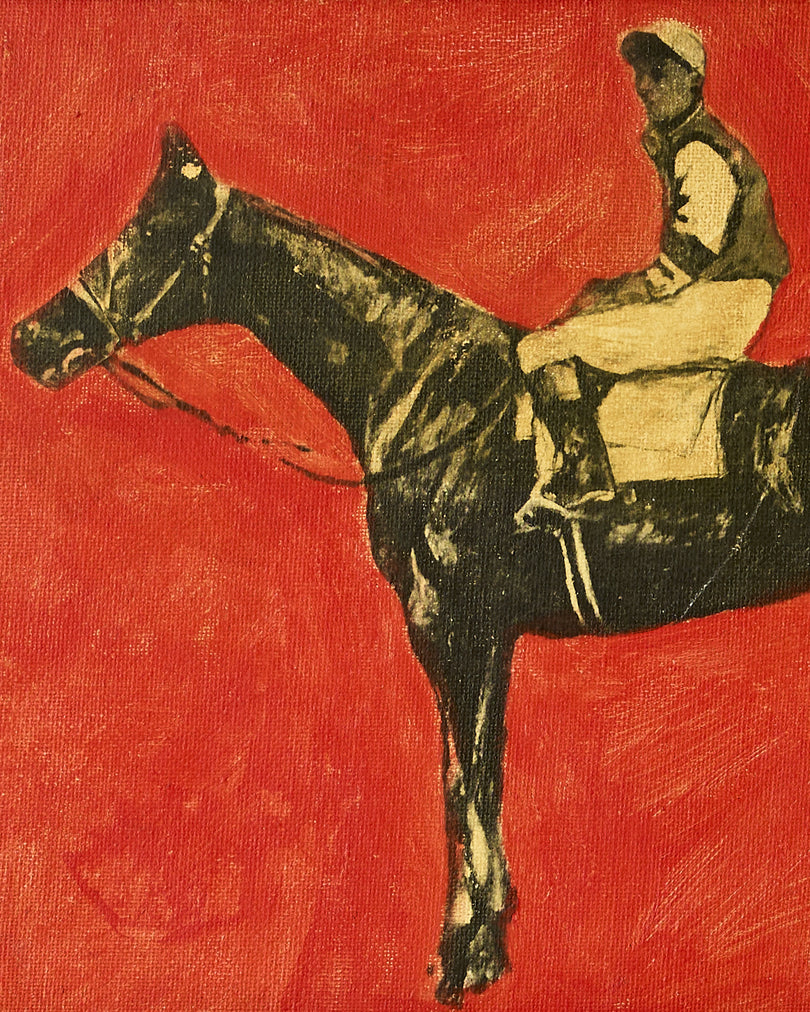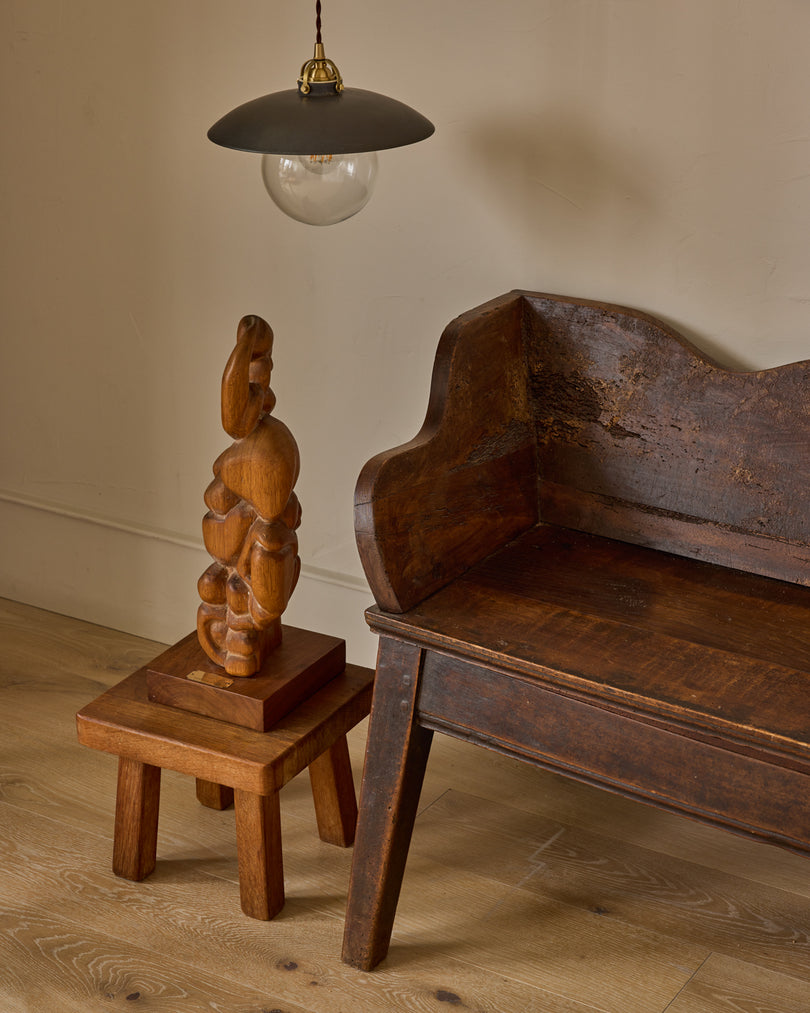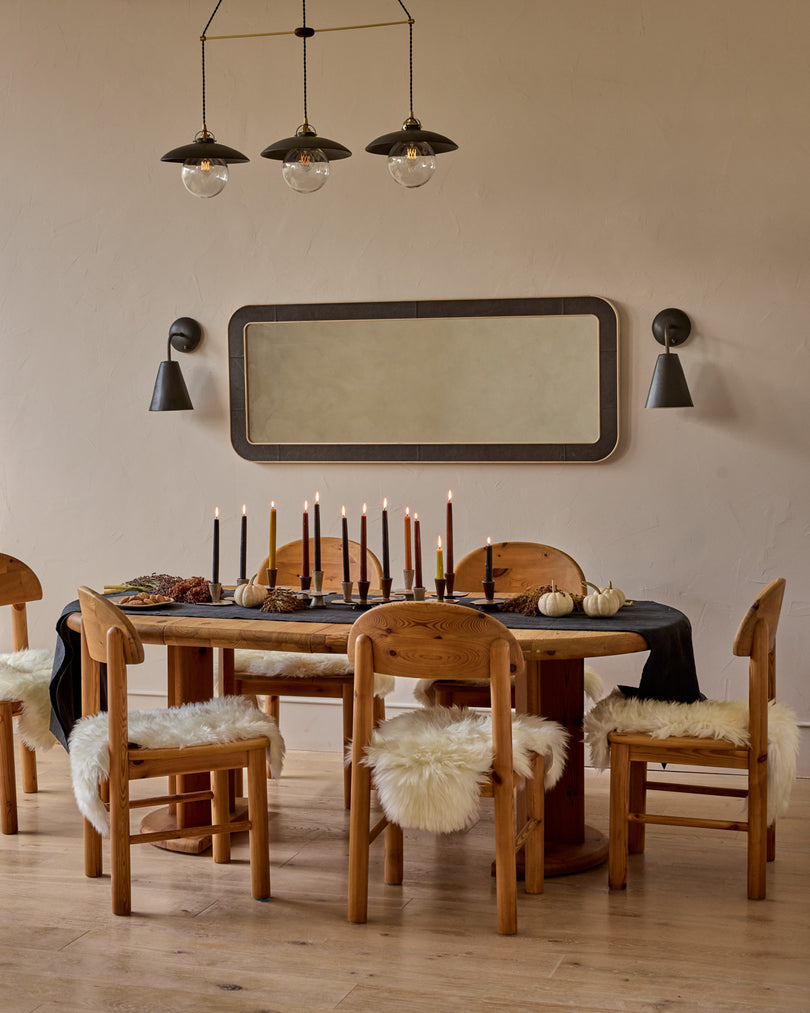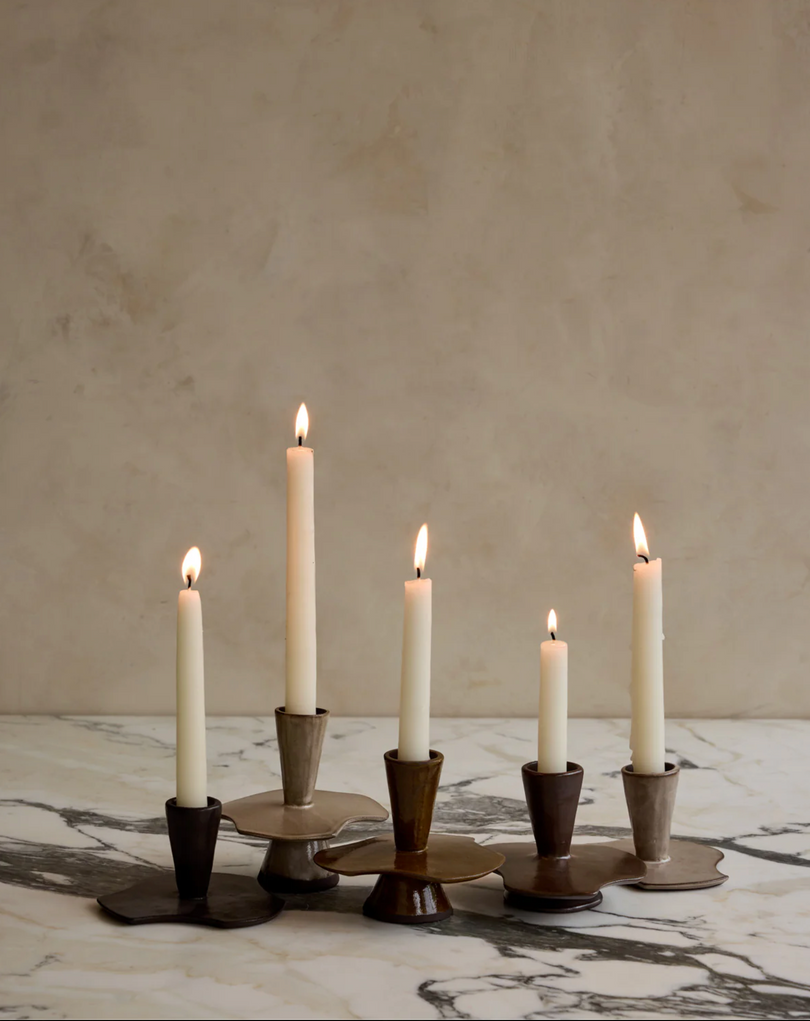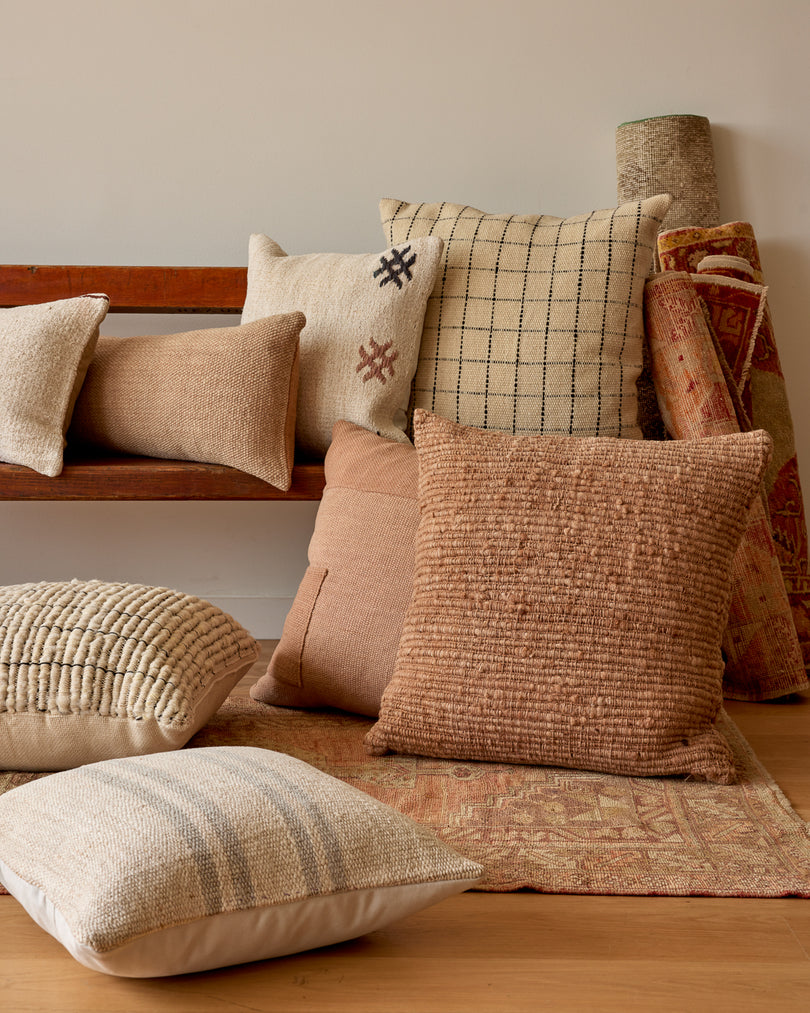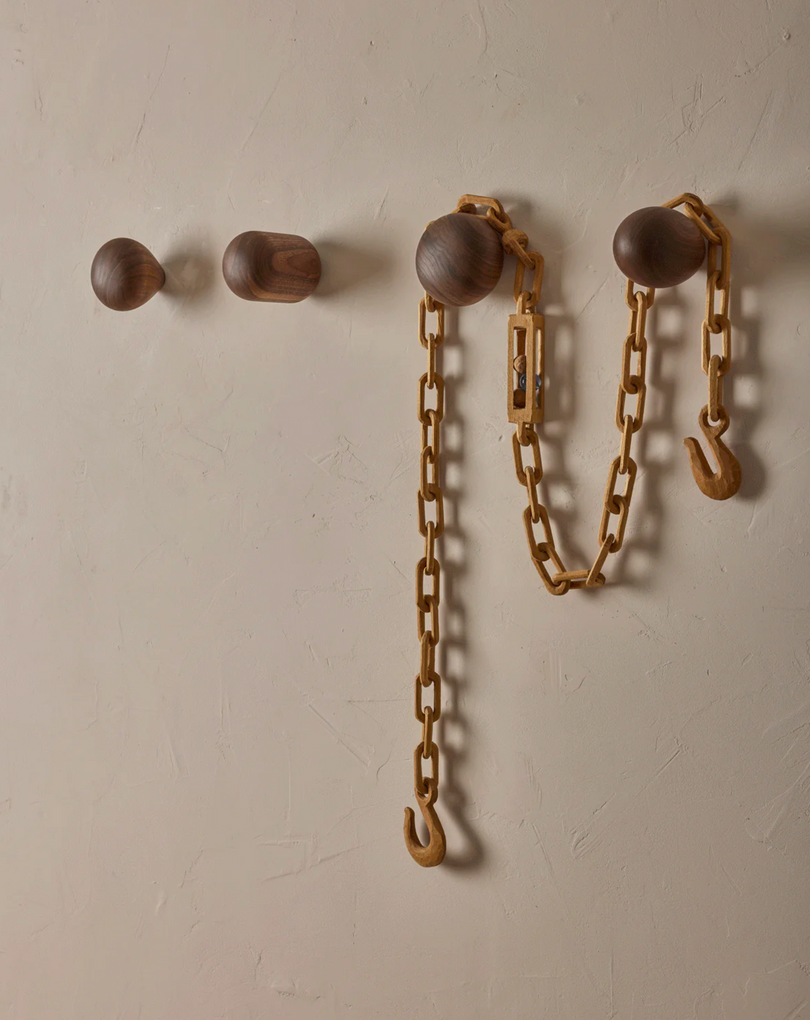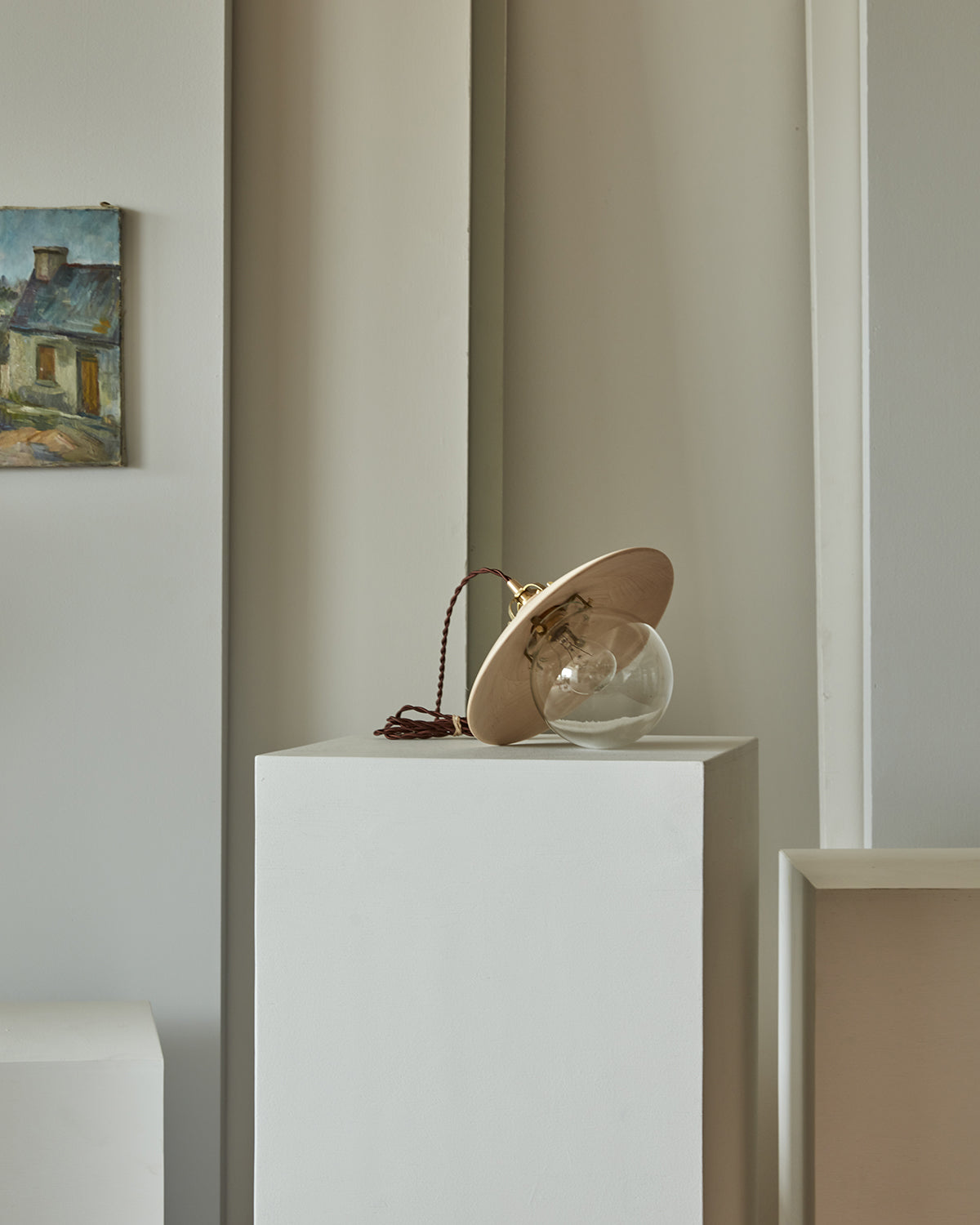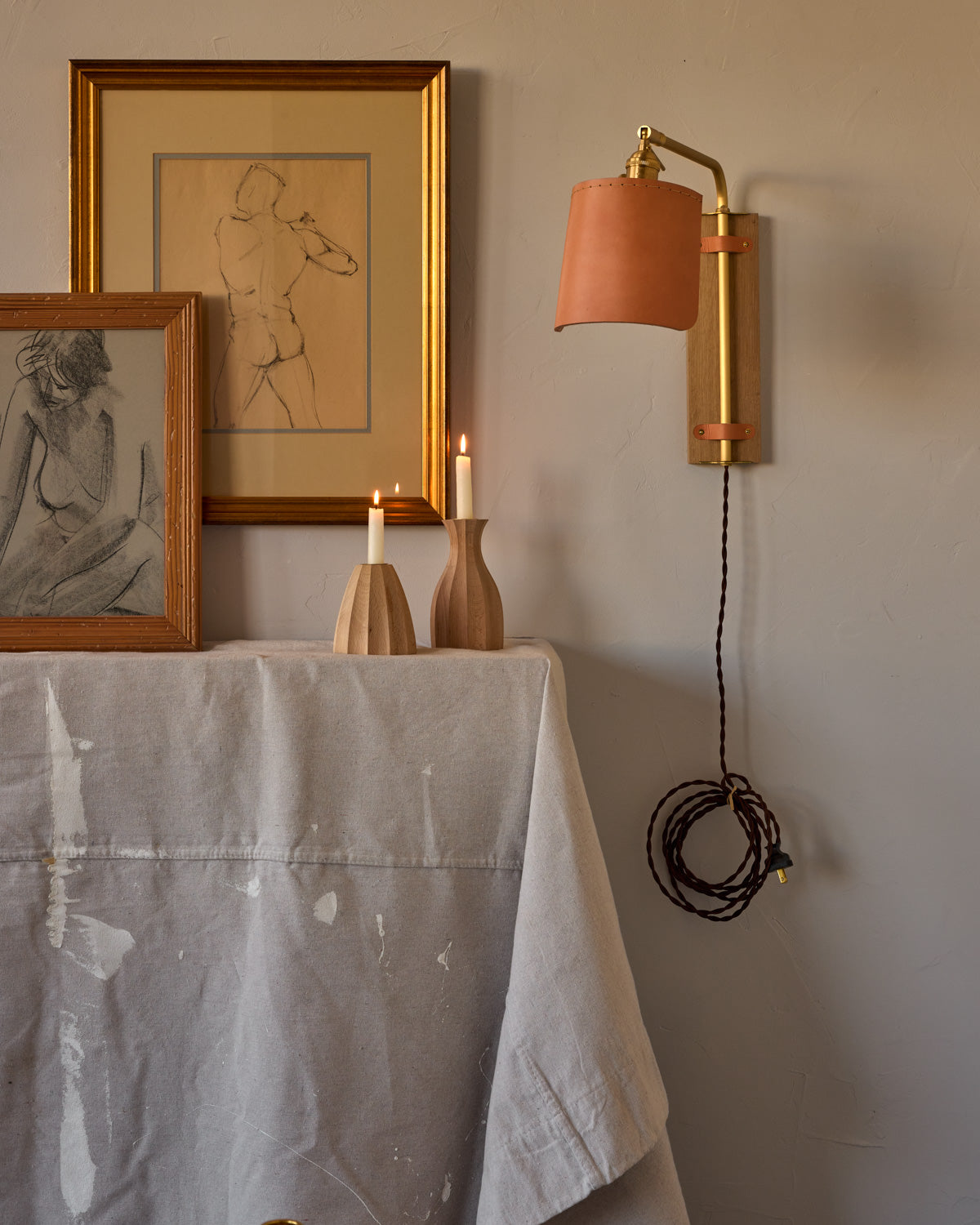Words by Kelsey Mulvey, Photography by Jason Varney

Robert Ogden and Natalie Page might be in the business of making new home décor at Lostine, but they’ve always had a soft spot for time-honored, vintage pieces. “I don’t think that any of us have homes that don’t have some piece of vintage in them,” Ogden shares. “It feels like a happy moment.” In fact, the couple would style vintage pieces into their photos of Lostine products—only to find that many customers were asking if they were also on sale. However, it wasn’t until the two went vintage shopping in Europe that they had a light bulb idea: Why not sell vintage pieces at Lostine?
“We looked at each other and asked, ‘Are we going to fill a container?’” Ogden shares. “We both said yes, and quickly found someone who could help us gather the things we were buying into a warehouse.”
Now, Lostine is dropping its latest Vintage Collection, a carefully curated selection of furniture, art, and home décor. Ogden and Page search all corners of the world—including France and Denmark—to find time-honored pieces that complement Lostine’s inventory. “What Natalie and I have envisioned is that designers will be able to use the pieces that we've selected in [our vintage section] to curate together with our collection,” Ogden says.
Below, Ogden and Page share a behind-the-scenes look at their latest Vintage Collection drop.
Vintage 101 with Robert & Natalie

Q: Are there specific design eras or iconic designers/manufacturers you find yourself consistently drawn to when sourcing furniture?
A: We gravitate toward studio pieces when we can find them —works made by cabinet makers or architects for specific projects that were never mass produced. These one-off pieces often are the most interesting and intriguing as they are personal to the maker. Rather than focusing on labels, we look closely at how and when a piece was made. There is beautifully crafted work that will stand the test of time and is not always a designer name. Tobias Scarpa, Bruno Mathsson, and Charles Dudouyt are some of the designers we've recently taken an interest in, with pieces we've acquired and sold. Robert and I have also been learning more about the furniture work of architect Bertrand Goldberg.
Q: Are there certain materials or design details that you’re especially drawn to when sourcing?
A: We love pieces with clever mechanics—items that fold, pivot, expand, or hide compartments in unexpected ways. There's something so joyful about discovering an unexpected function inside a beautiful form.

Q: Have any recent interior design trends influenced your buying choices?
A: While we stay mindful of design trends, our choices—like those in our lighting collection—are ultimately guided by our own aesthetic compass. We source pieces we truly love, ones that seamlessly complement our collections. That being said, it is really fun and interesting to see how trends can mingle with what we are making for our brand collections and using that in our product photography.
Q: What advice would you offer to those new to vintage collecting when it comes to sourcing unique and high-quality pieces?
A: Every item we bring back has to feel like a natural extension of our aesthetic—it has to work within our world. If it doesn't we will begrudgingly pass...unless it is a personal "have to have".

Q: How important are labels, maker's stamps, or signatures when sourcing vintage pieces—do they play a role in your decision-making process?
A: Labels, stamps, and signatures are wonderful to find because they help trace a piece’s origin. But we don't source based on name alone. We're far more interested in the fundamental design—the shape, color, silhouette, and overall spirit of the piece—rather than chasing a particular label.
Q: What are Lostine’s quality control standards?
A: Every piece goes through a complete evaluation by our vintage team when it arrives. It runs through our shop from start to finish: mechanical quality control, historical research, refinishing if necessary (refreshing is better), sourcing period-appropriate hardware if needed, upholstery if necessary. If the upholstery is in good condition, we’ll leave it as-is but nobody wants to sit on a broken spring or a dank cushion.

Q: Are there any repairs that you won’t make?
A: If a piece isn’t functional or livable, we’ll repair it. However, we try to preserve patina whenever possible—small signs of life and age are embraced, not erased. If there’s a major flaw, like a deep scratch across the middle of a table, we’ll restore and refinish it carefully. Our approach is always to maintain a balance between preserving history and ensuring usability.
Q: What is your number one tip for maintaining vintage items once they’re home?
A: Coasters!
Q: Are there any signs of aging you like to keep in your vintage pieces?
A: Absolutely. We love the softened texture of worn leather, the rich patina that develops on brass, and the subtle imperfections, dips and even sometimes color changes that come with the age of a wood table. These details add depth and character of life lived. We want our home and vintage pieces to be well maintained but we also want to be at ease when we are using them.
Q: When shopping for vintage items, how can homeowners honor a piece’s cultural origin and history while still making it feel fresh and modern?
A: Bringing an old piece into a new environment naturally gives it a fresh perspective. Sometimes, placing a vintage piece in a pared-down, gallery-like setting allows its history and patina to shine. But truly, the best way to make a piece feel modern is simply to live with it—to let it become part of your daily life and home.
SHOP LOSTINE'S VINTAGE COLLECTIONS



